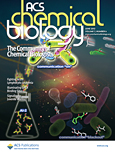
ACS Chemical Biology
Scope & Guideline
Illuminating the Pathways of Biochemical Research
Introduction
Aims and Scopes
- Chemical Biology Techniques and Methodologies:
The journal emphasizes the development and application of innovative chemical techniques for studying biological systems, including but not limited to, chemical probes, small-molecule inhibitors, and bioconjugation strategies. - Protein Engineering and Design:
A significant focus is placed on the engineering of proteins and peptides for various applications, including therapeutic development, biosensing, and understanding protein interactions. - Natural Product Chemistry:
The journal showcases research on the discovery, characterization, and biosynthesis of natural products, often highlighting their medicinal properties and potential therapeutic applications. - Systems Biology and Metabolomics:
Research in this area explores the interactions within biological systems using a chemical approach, providing insights into metabolic pathways and cellular responses. - Targeted Protein Degradation and PROTACs:
There is a growing emphasis on the development and application of proteolysis-targeting chimeras (PROTACs) and other strategies for targeted protein degradation, which are seen as promising therapeutic strategies. - Chemical Genetics and Chemical Proteomics:
The journal covers advancements in chemical genetics and proteomics that allow for the systematic study of gene function and protein interactions in living systems.
Trending and Emerging
- Chemical Probes for Target Identification:
There is a growing interest in the development of chemical probes that facilitate the identification of protein targets and elucidate mechanisms of action in complex biological systems. - Bioconjugation and Chemical Tagging:
The use of bioconjugation techniques to label and track biomolecules in vivo has seen a surge in research, highlighting its importance in studying cellular processes and therapeutic applications. - RNA Modifications and Their Biological Roles:
Research focusing on the chemical biology of RNA modifications, including m6A and other modifications, is rapidly emerging, reflecting the growing recognition of RNA's role in cellular regulation. - Targeted Protein Degradation Technologies:
The rise of PROTACs and other targeted protein degradation strategies is a key trend, with increasing publications exploring their potential in therapeutic applications. - Synthetic Biology and Engineered Biological Systems:
There is an increasing emphasis on synthetic biology approaches, including the design of engineered biological systems and pathways for therapeutic and industrial applications. - Structural Biology and Drug Design Integration:
The integration of structural biology techniques with drug design and chemical biology is gaining traction, leading to improved understanding of drug-target interactions and the development of more effective therapeutics.
Declining or Waning
- Traditional Small-Molecule Drug Discovery:
There has been a noticeable decrease in publications focusing solely on traditional small-molecule drug discovery, as the field shifts towards more innovative approaches such as targeted protein degradation and bioconjugation. - Basic Biochemical Pathway Studies:
Research that primarily focuses on elucidating basic biochemical pathways without a clear application or integration with chemical biology tools appears to be less common. - Single-Target Inhibitors:
The trend has shifted from developing single-target inhibitors towards multi-target strategies and the use of PROTACs, indicating a waning interest in traditional single-target approaches. - In Vivo Studies with Limited Biological Relevance:
Studies that do not bridge the gap between in vitro findings and significant biological implications in vivo are becoming less frequent, as the emphasis shifts towards more translational research.
Similar Journals
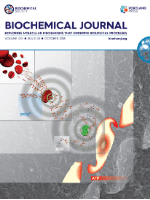
BIOCHEMICAL JOURNAL
Championing High-Quality Research in Molecular BiologyBIOCHEMICAL JOURNAL, published by Portland Press Ltd, stands as a leading publication in the fields of Biochemistry, Cell Biology, and Molecular Biology, reflecting a commitment to advancing scientific knowledge since its inception in 1945. With a distinguished Q1 ranking across these categories and impressive Scopus rankings, the journal serves as an invaluable resource for researchers, professionals, and students alike, facilitating critical discoveries and innovative research practices. Although not currently offering open access, the journal provides a platform for high-quality peer-reviewed articles, ensuring rigorous standards in the dissemination of biochemical research. Spanning over seven decades and continuing through to 2024, the BIOCHEMICAL JOURNAL fosters an environment where cutting-edge biochemical research thrives, supporting the global scientific community's efforts to address complex biological questions and enhance our understanding of fundamental cellular processes.
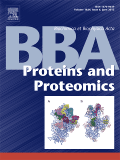
BIOCHIMICA ET BIOPHYSICA ACTA-PROTEINS AND PROTEOMICS
Elevating Proteomics to New HeightsBIOCHIMICA ET BIOPHYSICA ACTA-PROTEINS AND PROTEOMICS, published by Elsevier, is a prestigious academic journal that serves as a vital resource for researchers, professionals, and students in the fields of biochemistry, biophysics, and proteomics. With an ISSN of 1570-9639 and an E-ISSN of 1878-1454, this journal features high-impact research articles aimed at advancing our understanding of protein structure, function, and interactions, contributing significantly to both theoretical and applied sciences. Recognized for its quality, it proudly holds a Q1 ranking in Analytical Chemistry and Biophysics, and Q2 in Biochemistry for 2023, alongside notable Scopus rankings that reflect its influence in the realm of molecular biology. The journal's commitment to disseminating essential findings supports the ongoing evolution of proteomic sciences and encourages collaborative discourse among the global scientific community. For aspiring authors, the journal offers open access options, enabling broad visibility of their work. Join the conversation in this dynamic field and contribute to shaping the future of protein research!
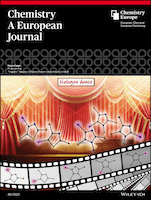
CHEMISTRY-A EUROPEAN JOURNAL
Catalyzing Progress in the Scientific CommunityCHEMISTRY-A EUROPEAN JOURNAL is a premier academic journal published by WILEY-V C H VERLAG GMBH, specializing in the diverse fields of chemistry and catalysis, with a distinguished focus on organic chemistry. Since its inception in 1995, the journal has established itself as an authoritative resource for researchers and professionals, currently classified in Q1 in Chemistry (miscellaneous) and Organic Chemistry, reflecting its high-quality contributions to the scientific community. With an impressive impact factor and robust Scopus rankings—#33 in Organic Chemistry and #26 in Catalysis—this journal serves as a vital platform for disseminating innovative research findings and critical advancements in chemical sciences. Although not an open-access journal, it provides valuable access options for institutions, ensuring wide reach and engagement within the scientific community. As it converges into 2024, CHEMISTRY-A EUROPEAN JOURNAL remains a key resource for anyone dedicated to advancing the frontiers of chemistry research.
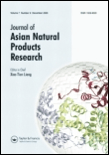
JOURNAL OF ASIAN NATURAL PRODUCTS RESEARCH
Cultivating Insights in Complementary MedicineJOURNAL OF ASIAN NATURAL PRODUCTS RESEARCH is a prestigious publication in the field of natural products, focusing on valuable research spanning analytical chemistry, pharmacology, and complementary medicine. Published by Taylor & Francis Ltd in the United Kingdom, this journal has established itself as a key resource for academics and professionals seeking to explore advancements in drug discovery and organic chemistry. With a converged publication timeline from 1998 to 2024, the journal boasts several commendable category quartiles as of 2023, reflecting its robust standing in the research community: Q2 in Complementary and Alternative Medicine, Q3 in multiple domains including Analytical Chemistry and Organic Chemistry, and Q4 in Molecular Medicine. Although it currently does not offer open access, the journal remains a valuable compendium for empirical research and innovative studies in areas such as pharmacology and medicinal chemistry. Researchers, professionals, and students alike will find the JOURNAL OF ASIAN NATURAL PRODUCTS RESEARCH to be an essential platform for sharing groundbreaking findings and fostering collaborations that lead to significant advancements in science and health.
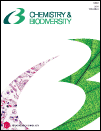
CHEMISTRY & BIODIVERSITY
Connecting Molecules to Ecosystems.CHEMISTRY & BIODIVERSITY is a prominent peer-reviewed journal published by Wiley-V C H Verlag GmbH, serving as a vital resource in the intersecting fields of biochemistry, bioengineering, and miscellaneous chemistry. With an ISSN of 1612-1872 and an E-ISSN of 1612-1880, this journal has established itself over its converged years from 2004 to 2024 as a platform for innovative research that contributes significantly to the understanding of chemical processes in biological systems. The journal's impact is reflected in its category quartiles, particularly notable in Q2 in Chemistry and various Q3 and Q4 rankings across multiple related disciplines. While it is not an open-access publication, it continues to attract a diverse readership, including researchers, academics, and students, who are keen to explore the complexities of chemistry's role in biodiversity. Through high-quality articles and comprehensive reviews, CHEMISTRY & BIODIVERSITY plays an essential role in fostering advances in molecular biology and biochemistry, positioning itself as a key contributor to the ongoing discourse in the life sciences.
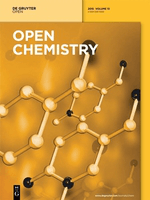
Open Chemistry
Exploring New Horizons in Chemical ResearchOpen Chemistry, published by DE GRUYTER POLAND SP Z O O, is a distinguished peer-reviewed journal that has been serving the global chemistry community since its inception. With an ISSN of 2391-5420 and an E-ISSN also of 2391-5420, this open-access journal has been accessible to researchers and practitioners alike since 2015, ensuring a wide dissemination of high-quality research findings. Located in Germany, specifically at BOGUMILA ZUGA 32A STR, 01-811 WARSAW, MAZOVIA, POLAND, Open Chemistry aims to publish innovative research across various chemical disciplines, with special attention to miscellaneous chemistry and materials chemistry. It is currently ranked in the Q3 category for both fields as of 2023, reflecting its solid standing within the academic community, with specific ranks of 187/408 in General Chemistry and 153/317 in Materials Chemistry, corresponding to respective percentiles of 54 and 51. Open Chemistry not only enhances the accessibility of cutting-edge research but also serves as a vital resource for students, professionals, and scholars seeking to advance their knowledge in the rapidly evolving landscape of chemical sciences.

EGYPTIAN JOURNAL OF CHEMISTRY
Transforming Ideas into Solutions in the World of ChemistryThe Egyptian Journal of Chemistry, published by the National Information & Documentation Centre (NIDOC), serves as a vital platform for disseminating novel research and advancements in the field of chemistry and its interdisciplinary applications. Established in 2004 and continuing its publication through 2024, this journal encapsulates a diverse range of topics including Biochemistry, Chemical Engineering, and Materials Science, reflected in its respectable Scopus rankings. With an array of Quartile rankings indicating its varying impact across different categories, scholars can benefit from its insights into innovative solutions and methodologies that address pressing scientific challenges. Although it currently does not operate under an open access model, researchers and students are encouraged to leverage its findings as it plays a pivotal role in the academic landscape of Egypt and beyond. For those engaged in chemical research, the Egyptian Journal of Chemistry stands as an essential resource, contributing significantly to the global body of scientific knowledge.

ANALYTICAL AND BIOANALYTICAL CHEMISTRY
Unveiling the Complexities of Chemical AnalysisANALYTICAL AND BIOANALYTICAL CHEMISTRY, published by SPRINGER HEIDELBERG, is a leading international journal that serves as a vital platform for innovative research in the fields of analytical and bioanalytical chemistry. With an impressive impact factor and ranking in the Q2 category for both Analytical Chemistry and Biochemistry, the journal highlights key advancements and methodologies that drive the discipline forward. Established in 1996 and continuing vigorously into 2024, it has gained significant recognition with Scopus rankings placing it in the 83rd and 78th percentiles within its categories, underscoring its impact and relevance. The journal's commitment to open access facilitates widespread dissemination of critical scientific knowledge, making it an essential resource for researchers, professionals, and students dedicated to exploring the complexities of chemical analysis. With its base in Heidelberg, Germany, ANALYTICAL AND BIOANALYTICAL CHEMISTRY continues to inspire and influence the global research community.
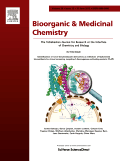
BIOORGANIC & MEDICINAL CHEMISTRY
Advancing the Frontiers of Biochemical ResearchBIOORGANIC & MEDICINAL CHEMISTRY, published by Pergamon-Elsevier Science Ltd, is a prominent journal in the fields of biochemical research and drug discovery, with an ISSN of 0968-0896 and an E-ISSN of 1464-3391. Established in 1993, it has garnered respect and recognition, evidenced by its categorization in various quartile ranks across 2023, including Q2 in Clinical Biochemistry and Pharmaceutical Science. It holds significant Scopus rankings, placing it in the 75th percentile in Pharmaceutical Science and 74th percentile in Organic Chemistry, highlighting its influential contributions to ongoing research and developments. This journal provides a platform for disseminating advancements in bioorganic and medicinal chemistry, focusing on innovative methodologies, therapeutic advancements, and molecular pharmacology. Although it does not follow an open-access model, it remains a key resource for researchers, professionals, and students aiming to stay at the forefront of scientific discovery in the UK and beyond. The journal’s commitment to enhancing knowledge within the biomedical community makes it an essential read for those passionate about this dynamic field.

Trends in Chemistry
Charting New Territories in Chemical DiscourseTrends in Chemistry, published by CELL PRESS, stands at the forefront of the multidisciplinary field of chemistry, offering cutting-edge research and insights that shape contemporary scientific discourse. With its impressive rank of #12 out of 408 in the General Chemistry category of Scopus—placing it in the 97th percentile—this journal represents the pinnacle of academic excellence and innovation. Since its inception in 2019, it has provided a platform for sharing pivotal developments and trends in the chemical sciences, making it an invaluable resource for researchers, professionals, and students alike. Although it operates under subscription access, Trends in Chemistry is dedicated to expanding the frontiers of knowledge and fostering a vibrant academic community. Its Q1 quartile ranking underscores its significance and authority in the field, ensuring that it remains an essential reference point for anyone engaged in the ever-evolving world of chemistry. With its impactful contributions, Trends in Chemistry not only reflects current advancements but also drives future innovation in the discipline.